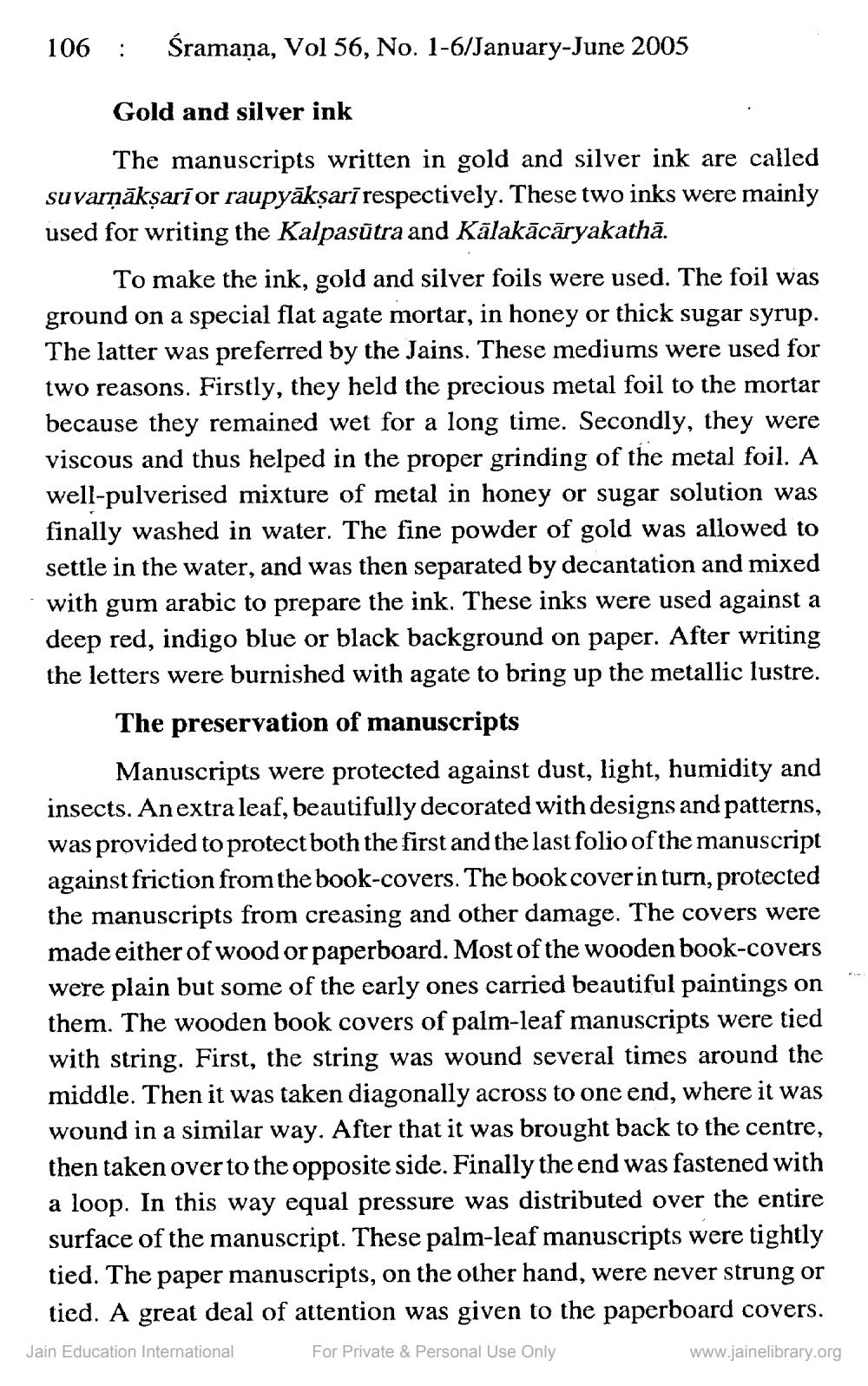________________
106
:
Śramaņa, Vol 56, No. 1-6/January-June 2005
Gold and silver ink
The manuscripts written in gold and silver ink are called suvarņākşarī or raupyākşarī respectively. These two inks were mainly used for writing the Kalpasūtra and Kālakācāryakathā.
To make the ink, gold and silver foils were used. The foil was ground on a special flat agate mortar, in honey or thick sugar syrup. The latter was preferred by the Jains. These mediums were used for two reasons. Firstly, they held the precious metal foil to the mortar because they remained wet for a long time. Secondly, they were viscous and thus helped in the proper grinding of the metal foil. A well-pulverised mixture of metal in honey or sugar solution was finally washed in water. The fine powder of gold was allowed to settle in the water, and was then separated by decantation and mixed with gum arabic to prepare the ink. These inks were used against a deep red, indigo blue or black background on paper. After writing the letters were burnished with agate to bring up the metallic lustre.
The preservation of manuscripts
Manuscripts were protected against dust, light, humidity and insects. An extra leaf, beautifully decorated with designs and patterns, was provided to protect both the first and the last folio of the manuscript against friction from the book-covers. The book cover in turn, protected the manuscripts from creasing and other damage. The covers were made either of wood or paperboard. Most of the wooden book-covers were plain but some of the early ones carried beautiful paintings on them. The wooden book covers of palm-leaf manuscripts were tied with string. First, the string was wound several times around the middle. Then it was taken diagonally across to one end, where it was wound in a similar way. After that it was brought back to the centre, then taken over to the opposite side. Finally the end was fastened with a loop. In this way equal pressure was distributed over the entire surface of the manuscript. These palm-leaf manuscripts were tightly tied. The paper manuscripts, on the other hand, were never strung or
tied. A great deal of attention was given to the paperboard covers. Jain Education International For Private & Personal Use Only
www.jainelibrary.org




